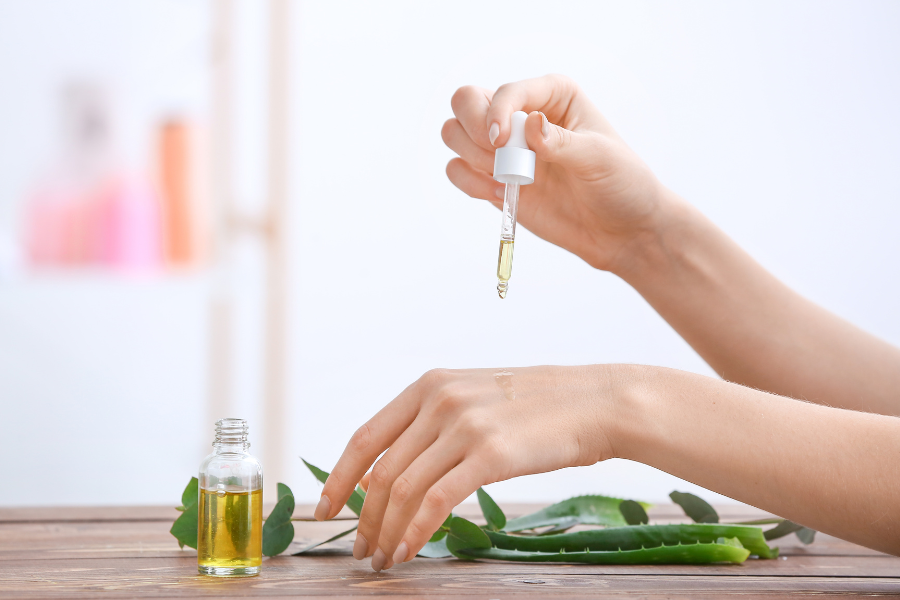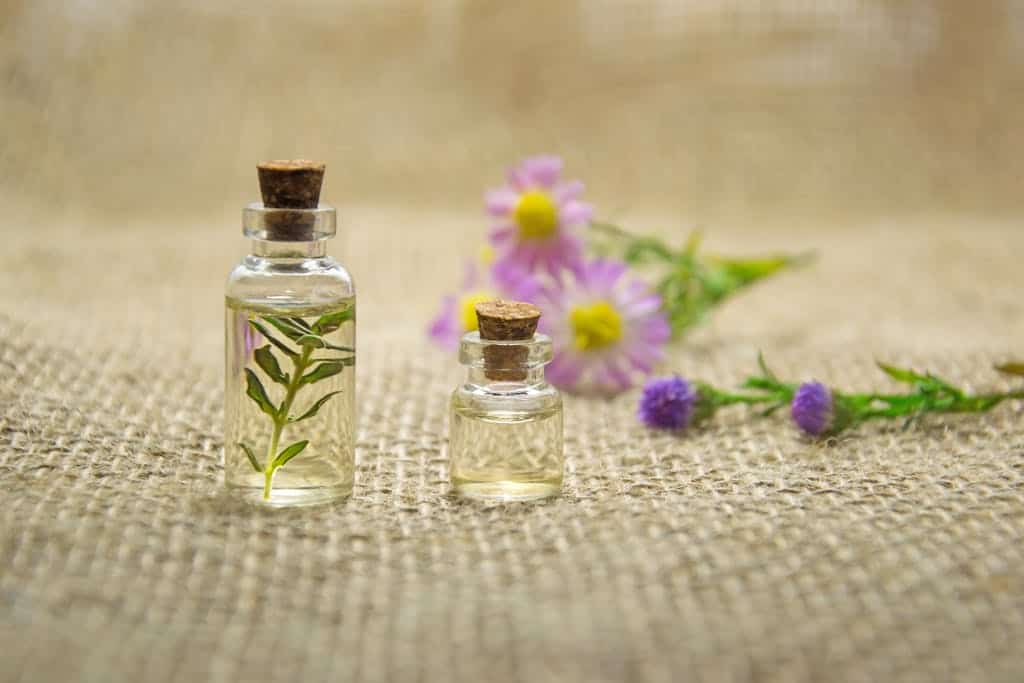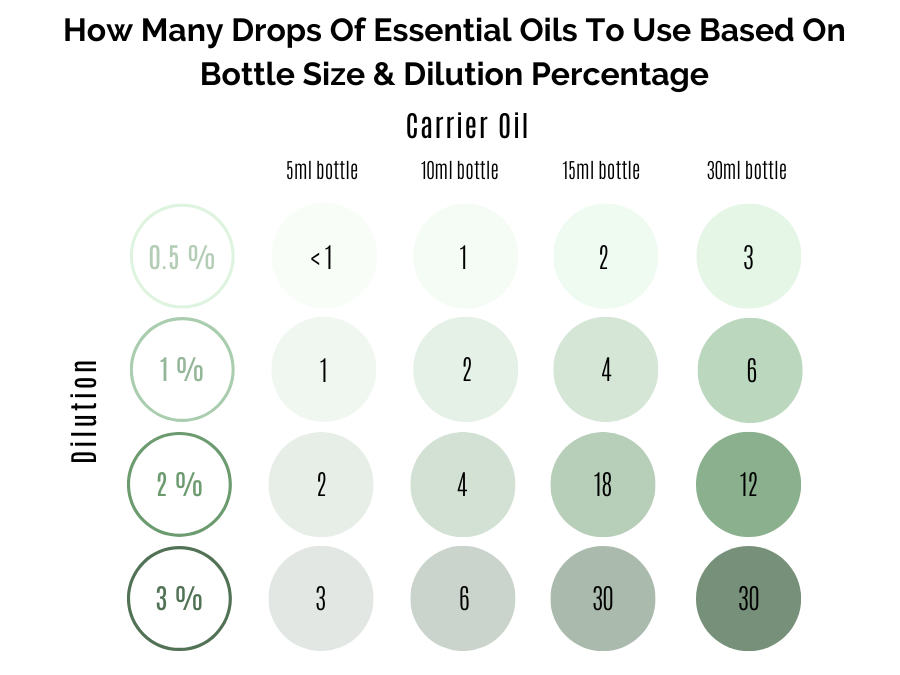Can You Apply Essential Oils Directly onto Your Skin?

There are numerous reasons why you may want to apply essential oils to your skin. Maybe you want to make your own health and beauty products, use a spot treatment or make a natural remedy for skin concerns. Whatever the purpose, it is important to understand how to use essential oils safely on the skin before applying them. If not used properly, essential oils can cause negative side effects such as allergic reactions and photosensitivity.
Can You Apply Essential Oils Directly Onto Your Skin? You can safely apply essential oils directly to the skin as long as you dilute them first. Since essential oils are highly concentrated, they can cause irritation if they are not diluted with a carrier oil before being applied to the skin. Essential oils are a common ingredient in various muscle rubs, cosmetics, and health products.
Medical Disclaimer: We are not registered medical professionals. The following content is for informational and educational purposes only and does not substitute professional medical advice or consultations with medical professionals.
Disclaimer: This article includes affiliate links. If you click one of them, we may receive a small percentage of the sale at no extra cost to you. Thank you for your support!
What Are Essential Oils?

Essential oils are concentrated components extracted from plants. The oils are extracted by steaming or pressing parts of plants. They are commonly used in aromatherapy, alternative medicines and health and beauty products such as lotions, muscle rubs, and fragrances. Numerous studies suggest various benefits of using essential oils. These range based on which oils you use.
Common benefits include:
- Reduces anxiety and pain
- Improves sleep
- Relieves headaches
- Reduces nausea
- Anti-aging properties
- Hydrates the skin
- Reduces inflammation
- Boosts mood
- Soothes damaged skin
- Increases attentiveness
- Antibacterial
While essential oils are used for therapeutic purposes and in some professional health practices, it is important to research the brand before you buy, especially online. Essential oils are not regulated by the Food and Drug Administration (FDA). Only therapeutic-grade oils should be used on the skin.
When looking for high-quality essential oils, go for ones that state they are 100% pure. In addition, review the ingredients list on the bottle, as some oils are blended with synthetic ingredients that could contain potentially harmful chemicals or lead to skin irritation.
What Are Carrier Oils?
Carrier oils are essentially base oils that are used to dilute essential oils. They work by reducing the concentration percentage and carrying the essential oils safely onto the skin.
Common carrier oils include:
- Coconut Oil
- Jojoba Oil
- Vitamin E Oil
- Argan Oil
- Grapeseed Oil
- Avocado Oil
- Rosehip Seed Oil
- Olive Oil
- Evening Primrose Oil
- Hemp Seed Oil
- Castor Oil
Before selecting a carrier oil, there are a few things to consider.
Skin Type
Some oils are comedogenic, meaning they are likely to clog your pores. These types of oils are more prone to cause breakouts and, therefore, are not encouraged for facial application. Coconut oil, for example, is highly comedogenic. It may have no reaction for some people, while for others, it could lead to acne and other skin flare-ups. If you have oily skin, avoid comedogenic oils.
In addition, carrier oils can cause skin irritation or allergic reactions. Always do a patch test before using carrier oils if you are unsure.
Shelf Life
Another thing to consider before selecting a carrier oil is the shelf life. While this may or may not be a deciding factor in which oil you choose, it is important to know how long your products will last to avoid using expired ones.
For example, rosehip oil does wonders for the skin and is known for hydrating, boosting collagen production, reducing hyperpigmentation, and protecting against sun damage. However, it has a relatively short shelf-life of only six months.
Absorption Rate
Lastly, carrier oils absorb at different rates. Some are fast-absorbing, while others can be slow, taking quite some time before they are absorbed into the skin. Depending on what you plan on making or using it for, the oil you select could vary. If you plan on using carrier oil on your face, you may want something that is fast absorbing, like jojoba oil. Whereas for a lip balm, you’ll want an oil with a slow absorption rate, such as castor oil.
How To Dilute Essential Oils
Essential oils are high in concentration and should always be diluted before applying to the skin. This helps reduce the chances of a reaction so you can reap the benefits of the oils safely. If you plan to apply to the face, such as in serum, oil or treatment, a 1% or less dilution is recommended. For body lotions, massage or pain oils, ensure your essential oil dilution is 2% or less.
Below is a chart of how many drops of essential oils are suggested based on the amount of carrier oil (per bottle size for reference) and desired dilution percentage.

How To Apply Essential Oils To The Skin
Once you have diluted your essential oil of choice with a carrier oil, you can then apply it to your skin with gentle rubbing. It is highly encouraged to conduct a patch test on an area of skin, such as the wrist, before using it all over or on sensitive areas like the face.
Some individuals may experience allergic reactions or skin irritations. Patch testing is important if you have never used essential oils before or if you are introducing a new essential oil into your routine.
Potential Risks Of Using Essential Oils
While many people assume essential oils are harmless since they have been around for ages, not all oils are safe to use and can lead to serious reactions. Each oil has its own chemical makeup that reacts differently based on the level of dilution, method of application, and if the individual has any of the following conditions:
- Underlying health concerns
- Allergies or sensitivities
- Asthma
- Skin conditions such as eczema or psoriasis
- Medications and supplements
- High blood pressure
- You are pregnant or breastfeeding
Please consult a medical professional such as a doctor, nurse or pharmacist before using essential oils, as some oils can lead to allergic reactions or are toxic if applied undiluted.
Signs of an adverse reaction to essential oils include:
- Skin irritation, including itchy, burning or rash
- Hives
- Contact dermatitis
- Eye redness or pain
- Vomiting
- Diarrhea
- Itchy or running nose
If you experience a severe allergic reaction or have difficulty breathing, call 911 or local emergency services immediately.
Phototoxic Essential Oils
Phototoxicity is a sensitivity to sunlight and UV lights. It can be caused by medications, topicals and essential oils. There are a handful of essential oils that cause photosensitivity, which can lead to redness, irritation, burning and blistering when combined with light exposure.
Here are a few common phototoxic essential oils. This is not a complete list.
- Bergamot Essential Oil
- Lemon Essential Oil (when cold-pressed)
- Lime Essential Oil (when cold-pressed)
- Bitter Orange Essential Oil – sweet and wild orange essential oils are not phototoxic.
- Cumin Essential Oil
- Grapefruit Essential Oil (when cold-pressed)
- Mandarin Leaf Essential Oil
- Angelica Root Essential Oil
Before applying essential oils, it is important to research if they may cause photosensitivity. Many cold-pressed essential oils are phototoxic and should only be used if you do not plan to be exposed to direct or long-duration sun exposure.






